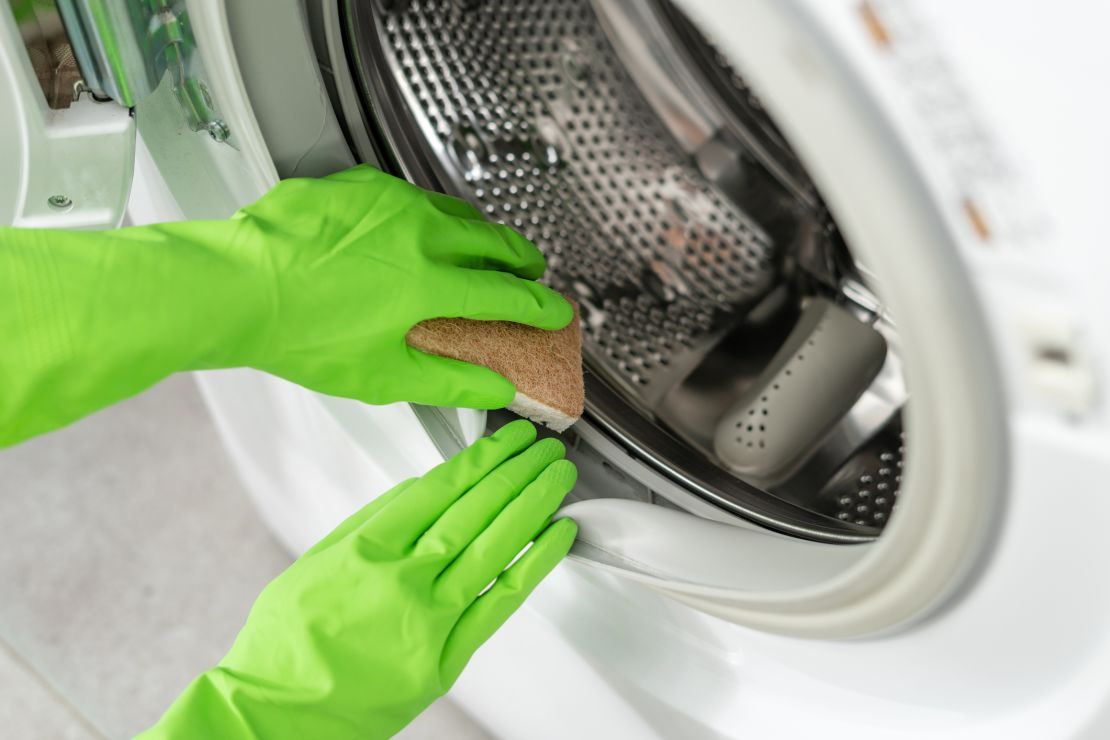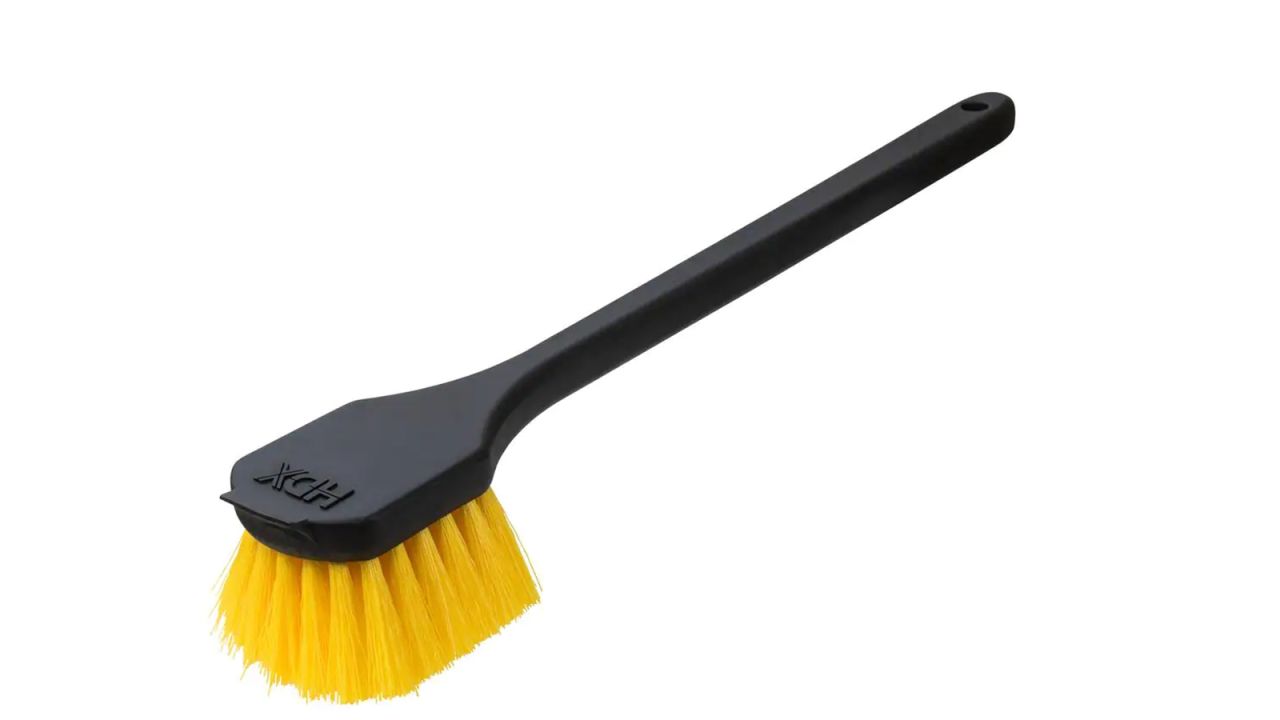It can be easy to overlook cleaning the things we use to clean other things, but major appliances like washing machines do need to be cleaned and properly maintained to optimize performance and ensure the safety of your household.
Cleaning a washer will prevent the buildup of laundry products and soil that can leave clothes and bedding dingy, even right out of the wash, and prevent odors from taking root in the machine — and in your laundry. We spoke to experts about how, and how often, to clean top-loading washers and front-loading washers.
How to clean a top-loading washing machine
Lindsay Jones, a communications brand manager at Maytag, provided step-by-step instructions for cleaning a top-loading washing machine. She recommends cleaning a washing machine regularly: “Staying on top of cleaning your washer means you don’t give residues a chance to take up residence in your machine.”
1. Wash the tub
Start by cleaning the tub, using a washing machine cleaner like Affresh or 1-quart liquid chlorine bleach. Run the washer’s cleaning cycle, followed by a rinse and spin cycle, to remove residue from the cleaner. Leave the washer door open to let the tub dry.
Important note: If using bleach, do not also use products containing ammonia or vinegar, as they cause a dangerous chemical reaction when mixed with chlorine bleach.
2. Clean the dispenser drawers
Pull out the dispenser drawer(s) until you feel resistance or, if they’re removable, take them out of the unit. Wipe them clean with a damp cloth and use a toothbrush or cleaning brush to scrub any stubborn buildup. Removable parts may also be soaked in warm water to loosen and remove residue. Wipe well after soaking.
3. Wipe the lid and exterior
Open the lid and clean in and around the door using a damp cloth. Use a damp cloth or sponge to wipe down the exterior of the machine. Avoid the use of abrasive or harsh cleaners when cleaning outside surfaces, as they can cause scratching and other damage.
Essentials for cleaning washing machines
Top loaders
This washing machine cleaner from Affresh cleans the pump, drum and filter. All you have to do is pop one of the cleaning tablets into the washer and run a normal cycle with hot water.
You can also clean the tub using 1 quart of chlorine bleach. Buy in bulk to save money.
The advantage to using microfiber clothes, like these from the Rag Company, is that they are designed to attract dust and dirt.
While an old toothbrush will work, these brushes from Oxo are better suited for deep cleaning, thanks to their durable nylon bristles and included wiper blade.
How to clean a washing machine filter

Top-loading washers with an agitator will need a deeper cleaning. “To fully deep-clean a washing machine, you’ll need to clean the filter and the agitator,” Gina Perry, a former senior merchant of cleaning at The Home Depot, says. “This procedure varies from one machine to the next.”
Consult the machine’s owner’s manual for specific instructions on how to remove the washing machine agitator and filter, and unplug the machine before removing any parts. Typically, Perry says, these are the steps for removing and cleaning a washing machine filter.
1. Remove the agitator
Use a socket wrench to remove the bolt holding the agitator, and lift the agitator out of the machine from its base.
2. Wash the agitator and filter in cleaning solution
Place the agitator and filter into a bucket, utility sink or bathtub filled with hot, soapy water or in a cleaning solution made from 2 cups of vinegar, 1/4 cup baking soda and 1/4 cup water.
3. Scrub, rinse and dry the parts
Use a soft bristle scrub brush to scrub down the parts. Rinse thoroughly, then dry them with a microfiber cloth. Replace the filter and agitator in the washing machine.
Essentials for cleaning washing machines
Filters and agitators
This adjustable wrench should fit all washing machine bolts. And because it’s universal, you can use it for other home improvement tasks.
Cheap, durable and practical, this 5-gallon bucket is perfect for a variety of spring cleaning projects, including soaking your washing machine filter.
You can’t go wrong with this affordable, heavy-duty brush from The Home Depot’s in-house brand.
How to clean a front-loading washing machine

“Due to their setup,” Perry says of front-loading washing machines, “they tend to be more prone to bad smells than top-load washers.” Perry provided step-by-step instructions for cleaning a front-loading washing machine to flush out unwanted mold and mildew growth and odors.
1. Clean the tub
Start by cleaning the tub, using an high-efficiancy washing machine cleaner like Affresh Washing Machine Cleaner on a normal cycle with the hot water setting.
2. Scrub the door gasket and dispenser drawers
Once the cleaner load finishes, scrub the door gasket with a toothbrush or sponge to remove buildup and debris, then use a cloth to wipe it clean with vinegar. Pull out the dispenser drawer(s) until you feel resistance or, if they’re removable, take them out of the unit. Wipe them clean with a damp cloth, and use a toothbrush to scrub any stubborn buildup.
3. Wipe the tub clean
Wipe the inside of the tub and the door with a microfiber cloth. Use a damp cloth or sponge to wipe down the exterior of the machine. Avoid the use of abrasive or harsh cleaners when cleaning outside surfaces, as they can cause scratching and other damage. Return detergent trays and parts to the machine and prop open the door to allow everything to dry thoroughly.
Essentials for cleaning washing machines
Front loaders
If you’re using toothbrushes to clean, then they ought to be sustainable. These feature a fully compostable bamboo handle and 100% recyclable packaging.
Tackle your washing machine or kitchen deep clean with these heavy-duty sponges, which come with a durable scouring pad.
Don’t have vinegar around the house? This bottle is cheap and formulated for cleaning.
How often should you clean your washing machine?
The frequency with which to clean a washing machine depends on a few factors, including the size of your household and what the machine is used for. Households with many members, or ones that use the washing machine to launder cloth diapers, outdoor work clothes or other heavily soiled textiles, will need to clean a washer more often.
“If you start to notice foul odors or leftover detergent/film in your washing machine, it’s probably time to give your appliance a deep clean,” Perry says.
The sniff test is a good way to determine if your machine is due for cleaning, but establishing a regular cleaning schedule can also be helpful. “Ideally, you should be cleaning your washing machine monthly,” Jones says, which is a good rule for large households or machines that are used for heavy-duty washing. For smaller households that launder less frequently, Jones says to clean the machine every 30 wash cycles.
If you frequently launder heavily soiled items, Gary Childers, a fabric care scientist and appliance expert at Procter & Gamble, recommends making use of the washer’s extra-rinse cycle to help extend time between cleanings. “Households with above-average soiled laundry may experience odors in the machine that others do not,” he says. “Extra-rinse options on the machine may help reduce the rate at which these odor-causing residues form inside the washer.”






























